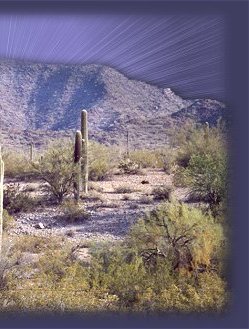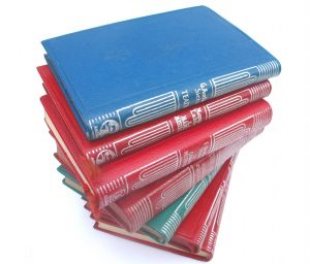The first HELP phase (1999-2004) was a pilot phase and the second phase (2004-2008) operationalised the HELP principles. While the first two phase were very successful in bringing together scientists, policy makers and stakeholders implementing integrated water resources management there is still a need to help solve new challenges such as:
* Climate change-poverty-water sector adaptations
* Water-poverty-environment nexus
* Energy-water-poverty nexus
* Demand for bio-fuels ensuing competition for land and water resources used for food production
* Globalization and trade policies for food security
* The changing role of state and local actors in the water
* Gender and the feminisation of agriculture and other water-intensive sectors.
Recent progress on the HELP initiative has been captured in a special volume of Water SA 34(4) containing selected papers from the ‘HELP in Action: Local Solutions to Global Water Problems – Lessons from the South’ symposium, Johannesburg, South Africa 2007.
http://www.wrc.org.za/publications_watersa_sa_help_sp_edition.htm
HELP network is currently calling for proposals for the third phase. The next HELP call is likely to be in 2013.
During this phase HELP is being organized along the focal areas linked with IHP-VII themes. You are required to nominate focal areas of interest in your HELP basin. Please complete Form-A to renew an existing HELP basin and Form-B for the new HELP basin.
Recognizing that not all necessary information or evidence of support will be readily available by the 20th January 2009. This is not of concern, please submit your proposal and provide additional information as it becomes available.
Please send your proposal electronically to G.Gobina@unesco.org at the IHP-Secretariat by the 20th of January, 2009.
Opportunities for Students to Link with the UNESCO IHP-HELP Program
Currently there are exciting opportunities for students to link with the HELP program through targetted research with the HELP basins on various aspects of integrated water resources management. Should you be interested to join the HELP network as an intern please contact Mr Shahbaz Khan : s.khan@unesco.org.
PAST EVENTS:
HELP Participation at the IV International Symposium on Transboundary Waters Management
A special HELP session on transboundary basins was organised at the IV International Symposium on Transboundary Waters Management (15-18 October 2008, Thessaloniki).
For further information on the Symposium - http://www.inweb.gr/twm4
HELP Regional Coordinating Units Planning Meeting
A meeting of the regional coordinating units was held at UNESCO HQ on the 7th and 8th of May 2008 under the guidance of Shahbaz Khan the new Global Coordinator of the international HELP Programme. This meeting was aimed at aligning HELP with the IHP-VII directions and to plan the future of HELP.
The new HELP themes are:
*
Water and global change
*
Water, food and energy nexus
*
Water and ecosystem services
*
Water and human health
*
Empowering stakeholders to resolve conflicts
*
Water education based on proven practices
Key actions from the RCU planning meeting are listed below:
* Update of HELP website for all basins
* Regular HELP Newsletter
* Self evaluation of HELP basins
* Lists of funding sources (global list including RCU contributions) made available on the web
* Publications (HELP affiliation of authors, database of publications available on the web)
* Call/invitation for new proposals (Fall 2008)
INTERNATIONAL WORKSHOP ON WETLANDS AT LAKE OF ANNECY-SILA
The French HELP basin "Pays de Savoie, Annecy, Mont Blanc, Leman" launched a new initiative related to Integrated Management in high watersheds. This new project initiated by the Syndicat Intercommunal du Lac d'Annecy (SILA) is based on the theme "Integrated Management of Wetlands". The main output of the project is the creation of a sub-network between HELP basins managers and other partners to share techniques, tools and information on wetlands management issues.
A technical workshop entitled "International workshop on wetlands at Lake of Annecy – SILA" was organized in Annecy, France on January 31st and February 1st 2008. A field trip in the wetlands of Lake of Annecy is planned on February 2nd, the international day of wetlands.
Should you be interested to join this technical sub-network and share your experiences or current projects on wetlands management please contact Mrs Charnay at: Berengere.CHARNAY@sedhs.com
HELP SOUTHERN SYMPOSIUM 2007 4-9 November 2007
Local Solutions to Global Water Problems - Lessons from the South.
The International HELP Symposium “Local Solutions to Global Water Problems- Lessons from the South” aims at bridging the gap between science and policy to solve “water related issues” at the local, national and international levels. HELP is creating a new approach to integrated catchment management through the creation of framework for water law and policy experts, water resource managers and water scientists to work together on water-related problems.
Participation of the 67 basin organizations from 56 UNESCO partner countries makes this a tremendous knowledge sharing opportunity on how to put HELP into action.
The HELP International Symposium is being organized by the Department of Water Affairs and Forestry (DWAF) in partnership with UNESCO HELP. It will be held in Pretoria, South Africa. Highlights will include technical and poster sessions, thematic discussions, workshops, receptions and a field trip to the Olifants River HELP basin.
For all information on the HELP Symposium, see the new HELP Symposium Website
EU LAUNCH OF THE DUNDEE CENTRE FOR WATER LAW, POLICY AND SCIENCE
The European Union launch of the Centre took place in Scotland House in Brussels, Belgium, on 28 November 2006. The launch included an afternoon discussion on water issues and EU initiatives. One of the most important tools to ensure implementation of a policy regarding integrated water management is a solid and responsive legal framework. Within this context, it is most important that water lawyers, water scientists and water users work together on water-related problems. The establishment of a global centre that will uniquely interface water law and policy with the biophysical sciences and engineering would provide an opportunity to ensure this relationship is effective and develop legal frameworks in line with stakeholders' needs and requirements.
It was during its 33rd session, in 2005, that the UNESCO General Conference approved the establishment of the IHP-HELP Centre for Water Law, Policy and Science at the University of Dundee, Scotland, United Kingdom. The Centre is strongly linked to HELP and is based at the International Water Law Research Institute (IWRL) of the University of Dundee in Scotland.
Presentations, speeches and details on the event can be found on this link.
WATER IN MOUNTAINS. INTERNATIONAL SYMPOSIUM 2006
The International Symposium "Eau en Montagne" took place in Megeve, France,September 20-22, 2006. Selected members of the HELP network were invited to present current research and projects on specific issues in mountainous catchments.The "Europe INBO 2006" International Conference on the Implementation of the European Water Framework Directive also occured during the Symposium.



 Part of me wants to disappear and drive to the Rockies…fell instantaneously in love with the topography of Colorado when I was driving to Vegas and became simply gobsmacked at the sheer heights and ethereal beauty of our country.
Part of me wants to disappear and drive to the Rockies…fell instantaneously in love with the topography of Colorado when I was driving to Vegas and became simply gobsmacked at the sheer heights and ethereal beauty of our country.

















